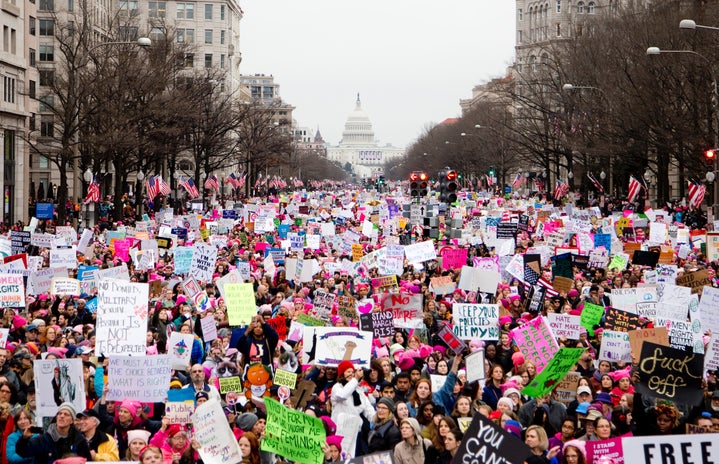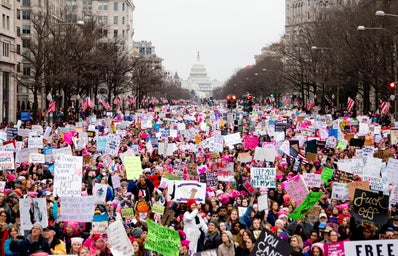-
Plessy v. Ferguson (1896), “Separate but Equal”
-
Details of the Case: After boarding a train in Louisiana and sitting in a section reserved exclusively for white passengers, Homer Plessy was arrested for violating the Separate Car Act requiring black passengers to sit in segregated sections of the train. Plessy argued that this Act violated his Fourteenth Amendment Rights under the equal protection clause.
-
The Decision: In a 7-1 ruling, the Supreme Court famously declared that the Separate Car Act did not violate the equal protection clause of the Fourteenth Amendment due to the fact that the accommodations were “separate but equal.”
-
-
Brown v. Board of Education (1954), Desegregation of Schools
-
Details of the Case: When eleven-year-old Linda Brown routinely took a long and dangerous route to school since the school closest to her was reserved for white students, her father and a dozen other parents sued on the grounds of Fourteenth Amendment violations. They argued that school segregation violated the equal protection clause.
-
The Decision: The Supreme Court unanimously agreed that school segregation violated the Fourteenth Amendment. This decision overturned Plessy v. Ferguson’s “separate but equal” ruling and called for school desegregation.
-
-
Mapp v. Ohio (1961), Unlawful Searches and Seizures
-
Details of the Case: Ohio police forced their way into Dollree Map’s home without a warrant after reasoning that a suspected bomber found refuge in her home. They found pornographic materials while searching her house and arrested her on the grounds of possessing obscene materials.
-
The Decision: In a 6-3 ruling, the Court solidified defendant rights in arguing that the Ohio police violated the Fourth Amendment’s clause against unlawful searches and seizures. This decision upheld “the exclusionary rule,” decreeing that any evidence obtained through unlawful means would be excluded in court hearings.
-
-
Engel v. Vitale (1962), Separation of Church and State
-
Details of the Case: New York law required daily prayer in public schools across the state throughout the mid 20th century. Seeing this as forced establishment of religion, parent Steven Engel and four other families sued the school board on the grounds of First Amendment violations.
-
The Decision: In a 6-1 ruling, the Court held that New York state law violated the First Amendment’s religion clause, thus enforcing the separation of church and state and prohibiting established religion in public schools across the country.
-
-
Gideon v. Wainwright (1963), Right to Council
-
Details of the Case: The Florida state court denied Clarence Earl Gideon’s request for a lawyer to defend him against felony charges of breaking and entering. Gideon was forced to defend himself during trial and sent to prison where he appealed to the Supreme Court.
-
The Decision: In a unanimous ruling, the Supreme Court necessitated that state courts provide counsel to defend those citizens who could not afford to hire an attorney.
-
-
Miranda v. Arizona (1966), Miranda Rights
-
Details of the Case: After being charged with kidnap and rape, Ernesto Gideon argued that his confession had been obtained unconstitutionally. He upheld that Arizona Police neglected to inform him of the right to have an attorney present during his interrogation and appealed to the Supreme Court.
-
The Decision: In a 5-4 ruling, the Supreme Court advocated for defendant rights in declaring that arresting officers must inform suspects of their right to remain silent, their right to consult an attorney before speaking to police, and that anything they say can and will be used against them in a court of law. These became known as Miranda Rights and if not stated by law enforcement prior to arresting a suspect, any obtained evidence is inadmissible in court.
-
-
Loving v. Virginia (1967), Interracial Marriage
-
Details of the Case: When Mildred Jeter (a black woman) and Richard Loving (a white man) got married in DC and returned home to Virginia where interracial marriage was illegal, they were sentenced to one year in prison. Loving sought legal representation and appealed to the Supreme Court.
-
The Decision: The Supreme Court unanimously ruled that state laws banning interracial marriage violated the Fourteenth Amendment’s equal protection and due process clauses which guaranteed marriage rights.
-
-
Roe v. Wade (1973), Right to an Abortion
-
Details of the Case: In 1969, Norma Leah Nelson, who later assumed the identity of “Jane Roe” to protect her identify, became pregnant and longed for an abortion because she felt she didn’t have the means to raise another child. However, Texas law denounced abortion unless necessary to save a mother’s life. In 1970 Roe famously filed a class-action lawsuit against Dallas County district attorney Henry Wade, arguing the unconstitutionality of Texas State Law.
-
The Decision: In a 7-2 ruling, the Supreme Court held that Texas State Law violated the Fourteenth Amendment’s privacy clause because it restricted and regulated women’s individual decisions, establishing abortion as a constitutional right.
-
-
Texas v. Johnson (1989), Extension of Free Speech
-
Details of the Case: After burning an American flag during a protest against Ronald Reagan, Gregory Johnson was charged with desecration of a venerated object and sentenced to one year in prison. He appealed to the Supreme Court on the grounds of his First Amendment rights.
-
The Decision: In a 5-4 decision, The Supreme Court ruled that burning the American flag was protected under the First Amendment’s free speech clause as a form of political expression.
-
-
Obergefell v. Hodges (2015), Same Sex Marriage
-
Details of the Case: In a class-action lawsuit, same sex couples from Ohio, Michigan, Kentucky, and Tennessee appealed to the Supreme Court on the grounds that state laws banning same-sex marriage violated Fourteenth Amendment rights.
-
The Decision: In a 5-4 ruling, the Supreme Court found state laws banning same-sex marriage unconstitutional under the Fourteenth Amendment’s equal protection and due process clauses, asserting marriage as a fundamental liberty.
-
Sources:



